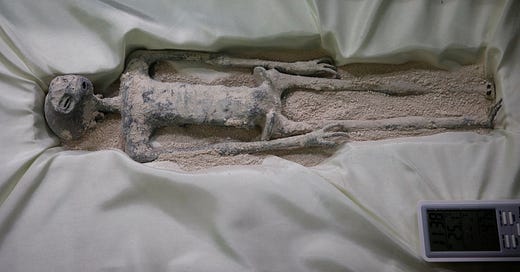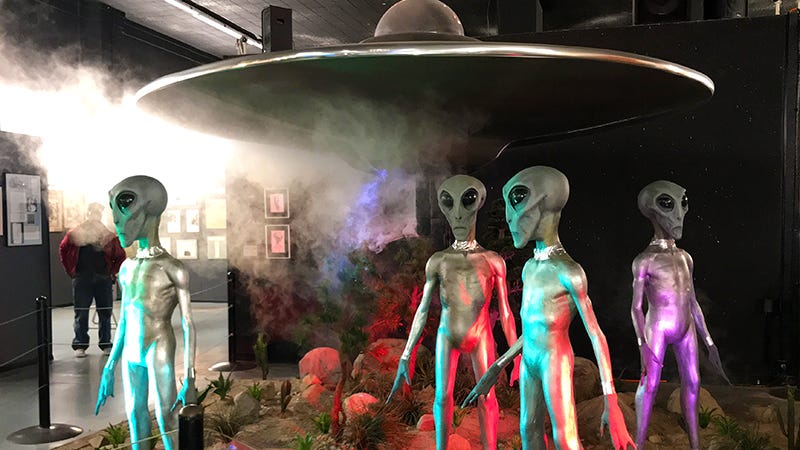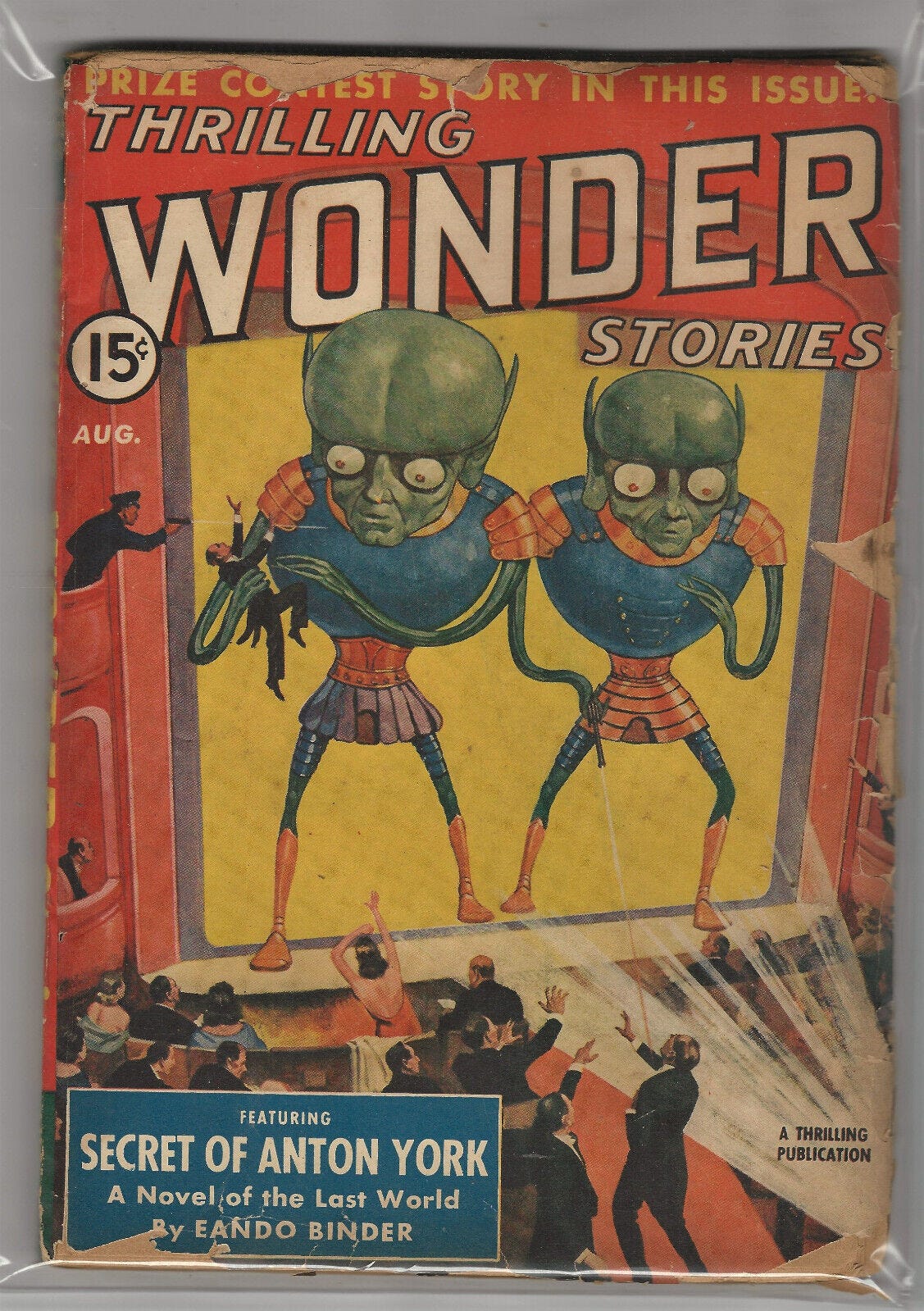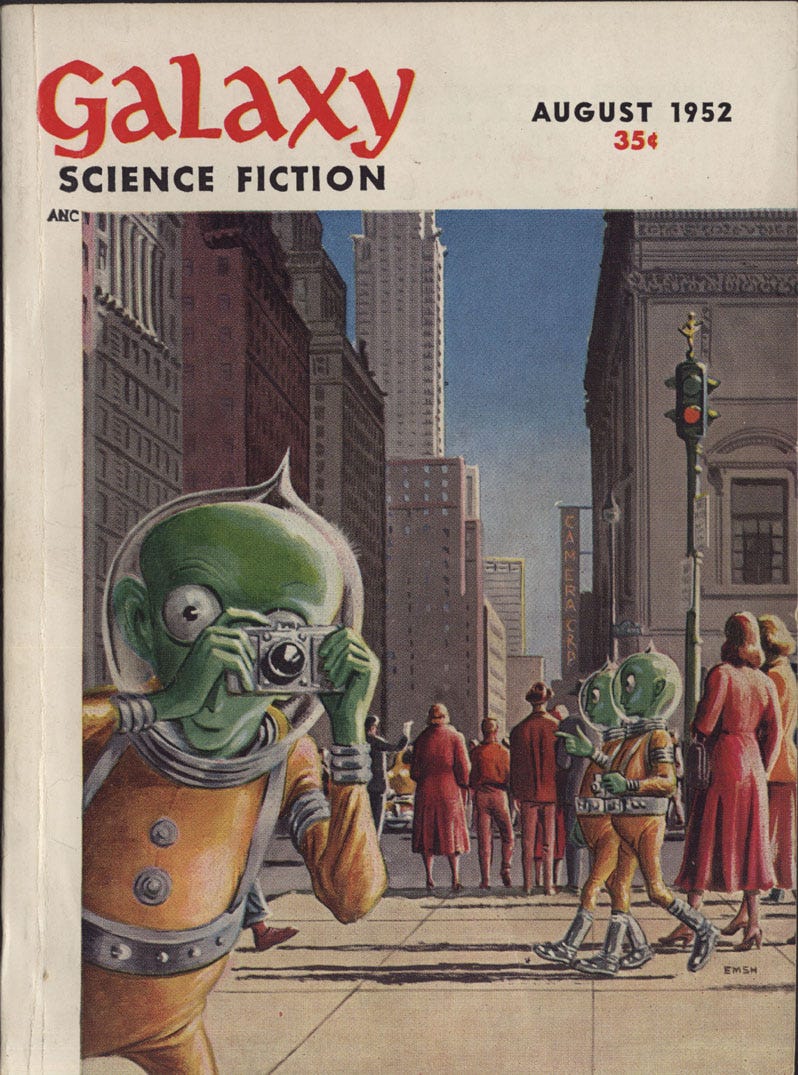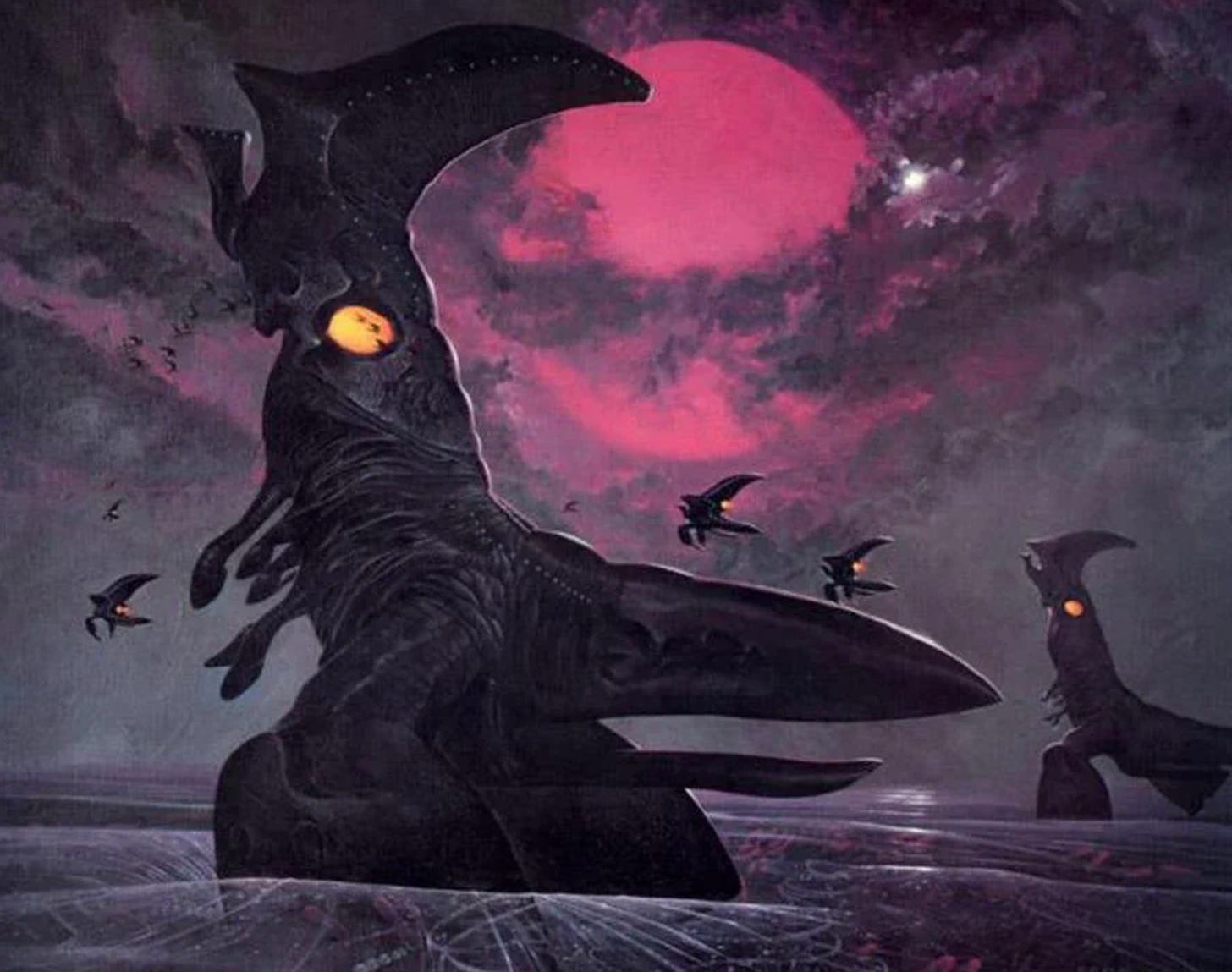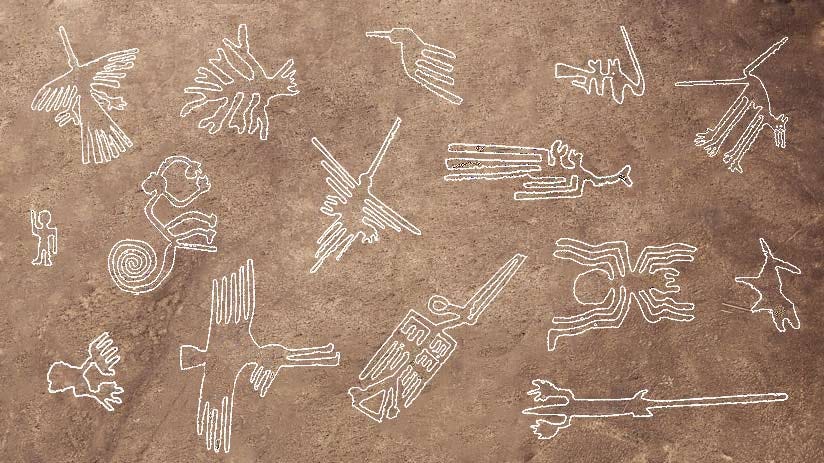Your paid subscription supports my creative projects and allows me to pursue original essays and artworks like these. If you’re already subscribed, I hope you’ll consider upgrading to a paid subscription! Thank you for reading.
Good morning, good afternoon, or good evening, people of Earth. I’m sure you recall the Mexican alien mummy incident that took place last week. Kind of weird, right? The way it was presented on social media, it appeared as if the Mexican government was casually doing an unboxing video of extraterrestrial (Mex-traterrestrial?) corpses in their possession. This, of course, was not the case. But I can see how some people went straight to “Mexico just dropped proof of alien life.”
This might disappoint some, but, no, the alien mummies are not evidence of intelligent extraterrestrial life. They do, after all, look a bit like a high school art student started making a papier-mâché E.T. and then gave up.
But while the mummies don’t hold any information about “actual aliens,” they do, I think, have a lot to say about humans. That is, if we’re willing to listen. Allow me to serve as your Discount Amy Adams in this bootleg Blu-ray disc of Arrival (all the dialogue is in Spanish and the subtitles are in Danish). What are the Mexican alien mummies trying to tell us, and what, if anything, can we learn from them?
I must say I feel uniquely qualified in this role. For one, like the alien mummies, I, too, am an unnerving Latino. Second, I’ve read extensively about extraterrestrials and speculative biology, or, I guess you could say, about hypothetical life on other worlds. I’ve even written about it before. It’s one of those rabbit holes I’ve explored to death. And, finally, I have a deep understanding of how people talk on the internet, because the internet is my actual home planet. I live here.
The reason this event gripped me so much is that it touched on all of the above: extraterrestrial life, dark internet humor, fraud, failed art projects, and, at its very core, the burning question. “Are we really alone?” In the end, everything from the mummified bodies to the internet’s response was all too human.
So, let’s get into it. After decoding the Mexican alien mummies’ language and having an illuminating conversation with them, I’ve organized my findings into a list.
Why Do They Look Like That?
Let’s body shame some aliens.
The alleged alien mummies presented before Mexican Congress look like a checklist of pop culture extraterrestrials. They have humanoid bodies, enlarged heads, and elongated fingers. They look a great deal like “grays,” otherwise known as “Zeta Reticulans” or “Roswell Grays.” But where does that image come from?
It’s a bit contentious, but let’s go way, way back to before the Industrial Revolution, when humans had a different mascot representing our perennial fear of being abducted by strange beings: Fey Folk, or fairies. Most cultures had some version of them, be they duendes, or chaneques, and so on. These creatures were often depicted in folklore as being humanoid in appearance. Our practice of conjuring up mischievous entities who kind of look like us is an ancient one. When technological advances arrived, we retooled our fairytales to reflect that.
Among the first descriptions of an “alien gray” comes to us in Swedish author Gustav Sandgren's novel The Unknown Danger: A Vision of the Future. The aliens in this book were described as having big, bald heads, small noses and mouths, and weak chins. Their clothes were made of soft, gray fabric, and their limbs seemed similar to those of humans. Making these aliens human-ish was an important decision. It made them both scary and recognizable.
As humans, our brain is finely tuned to seek out our own kind. You might be familiar with the concept of pareidolia, or the phenomenon of seeing patterns or human faces in scenarios in which they don’t actually exist. Or maybe you’ve paid a visit to the uncanny valley, where a face looks human, but there’s something off about it, something that inspires a sense of unease. The typical “movie alien” is situated there, giving us the thrill of a potential threat, but still looking enough like us to be legible to mass audiences.
The image was cemented in the American imagination following a widely reported alleged abduction of a couple in New Hampshire in 1961, in which these traits were solidified in pop culture, and the hallmarks of the alien abduction story were established. The narrative typically involves being beamed up into a silver disc-like craft, probed (with some emphasis on the genitals), and then released. While under hypnosis, the couple described the aliens, resulting in these sketches being produced. They look familiar.
The popular “gray” visual was then further solidified by Steven Spielberg’s 1977 movie, Close Encounters of the Third Kind. However, it’s incredibly like that, like most cryptozoological creatures, the “grays” described in the 60s were influenced by pop culture, or, more specifically, by pulp magazines. I looked up some old pulp magazine covers (because I know how often cryptids can be traced back to them) and found this vintage cover from 1940.
Wonder Stories was a science fiction magazine published from 1929 to 1955. This volume, volume 17, shows an almost prototypical version of the aliens that would come to dominate fiction and film for decades to come. I also found these adorable tourists in a 1952 copy of Galaxy, another American science fiction magazine.
Honestly, the scariest thing here is inflation. 35 cents! Can you imagine?
In any case, looking at the alien mummies presented to the Mexican Congress, one can easily identify an aesthetic lineage. I mentioned earlier that they looked like E.T., and, indeed, E.T. also falls neatly into the category of “humanoid little guy.” When I first laid eyes on them, I figured they were hoaxes due to similarities in popular Earth depictions of aliens.
For some more interesting takes on what extraterrestrial life might look like, I suggest you look elsewhere. I always think of the emperor sea striders from Wayne Barlowe’s Expedition. If we were to encounter alien life, it’s possible they would have undergone a similar Darwinian process to humans, with traits being selected for success in their alien environments. But the road those organisms take could be wildly different from ours, resulting in different traits being selected for. In other words, aliens would probably look… well, alien.
Who Is Jaime Maussan?
Hooboy. The short answer to this question is “some hack,” I guess. But there’s more to it than that. He’s a “journalist” (air quotes have perhaps never worked harder) and known entity who has pulled this kind of stuff before, perhaps most notably in 2015 when he reported another alien body that was later proven to be that of a mummified human child. If that sounds incredibly dark, well, put a pin in that for the next section.
Are the Mummies Racist?
Right, here’s “the next section.”
Are the Mexican alien mummies racist? Well… yeah, sort of. Not as in, like, “the Mexican alien mummies said something problematic on a podcast,” but more as in “they are probably the byproducts of indigenous grave robbing.”
To begin with, both “Mexican” and “alien” here don’t really apply. It’s unfortunately the case that “mummies,” however, probably does.
Some paleontologists have gone in depth about this, but it’s incredibly likely that the alien mummies were crafted out of a mix of human and animal bones. It’s a macabre thought, but there’s a nonzero chance that the alien mummies that have been paraded before a global audience and been so gleefully memed contain human remains.
This is an issue that has repeatedly affected Peruvians and indigenous people, in particular. A notorious case is that of “Maria,” remains that fraudsters tried to pass off as an alien, but were later proven to be a pre-Columbian Nazca mummy that had been tampered with.
There is great interest in Peru from these hoaxers due in part to the existence of corpses with elongated heads. These head shapes result from an ancient practice of binding and molding skulls in youth. Peru is also home to the famed Nazca Lines, artworks that UFOlogists have long claimed, rather offensively, in my opinion, that they are the works of aliens and not indigenous people.
Indigenous grave robbing is an insidious and prolific problem in the Americas. In many cases, this was done by archaeologists, scientists, and museums, but hobbyists, too, have looted these graves for their bones, pottery, jewelry, and more.
The fake alien corpse cottage industry sits at a nasty intersection of these social ills. Beyond that, it’s not uncommon for alien enthusiasts to cast doubt on the achievements of certain civilizations, like the Aztec, Incan, Mayan, Egyptian, and so on, and to claim it was alien intervention that allowed them to reach such heights.
I’m a bit less sentimental on that last part, as I don’t really feel the need to defend (or find pride in) any human empire regardless of their location on the globe. But, I mean, come on. Most of the “aliens helped them” civilizations have something in common, right? It tends to be a certain kind of civilization that was apparently totally incapable of coming up with mathematical or architectural wonders on their own, right? Maybe? Are you seeing this?
But I digress.
What Was Up With the Internet’s Response?
In most movies where extraterrestrial life is confirmed, the knowledge shakes humans to their cores. It seems incredibly likely, though, that if the existence of aliens were somehow confirmed to the general population, people would just make memes. Based on multiple events in recent years, I’m willing to bet that we would meme through the actual apocalypse.
The funniest ones, to me, zeroed in on the alien mummies being Mexican, like this one showing a sope inspired by their appearance, or this illustrated one based on, of all things, an iconic photograph of Emiliano Zapata after his death.
These memes tickled me because it’s both very “Twitter” and very “Mexican” to make a bunch of crass jokes about something being billed as serious. Silly as it all is, though, as I mentioned above, there is a dark element at play. I guess that’s why, although I can appreciate the creativity and hilarious memes, I haven’t shared any myself. The whole thing makes me a bit nauseous.
But I’m not shaming anyone who did. It’s incredibly likely they didn’t know, and we haven’t received confirmation about what kind of bones are in the mummies that were displayed last week, even if I do have a terrible feeling about it. It is also weirdly the case that many, many popular internet memes have roots in dark subject matter. So many, in fact, that the topic might warrant a piece all its own.
I think, to cite one example, of the withering origin story behind the popular “woman yelling at cat” meme. It shows a moment where Taylor Armstrong, a cast member of The Real Housewives of Beverly Hills, is having a breakdown rooted in the emotional and physical abuse she suffered at the hands of her ex-husband who later died by suicide. The cat’s feelings on the meme are not known, but, for her part, Armstrong has taken it in stride. Every time I see it, though, I do think of that context.
Are We Alone?
Looking at everything we just covered, at the pop cultural influences and the fraudulent journalists and the grave robbing and the memes, I feel like the Mexican alien mummy incident really did encompass a great deal of the human experience. We are a fascinating species with an incredible capacity for imagination, as well as for deceit, dark humor, and cruelty.
As for the question at the center of it all, it remains to be seen. My take is that there are almost certainly “boring aliens” out there, as in, bacteria and microscopic organisms. Given the vastness of the universe, it wouldn’t surprise me at all if there were life forms we would recognize as flora or fauna out there either. As for intelligent life, well, anything capable of traversing galaxies might be hard for us to perceive. Their technology would basically be magic to us.
But, who knows? It could even be the case that intelligent life really does look like our “alien grays.” It’s unlikely, but the thing about the mysteries of the universe is that nothing is impossible. There’s so much we don’t know.
Or maybe the actual aliens, if indeed they are out there somewhere, have seen some of the stuff we get up to and have decided to stay far away.

